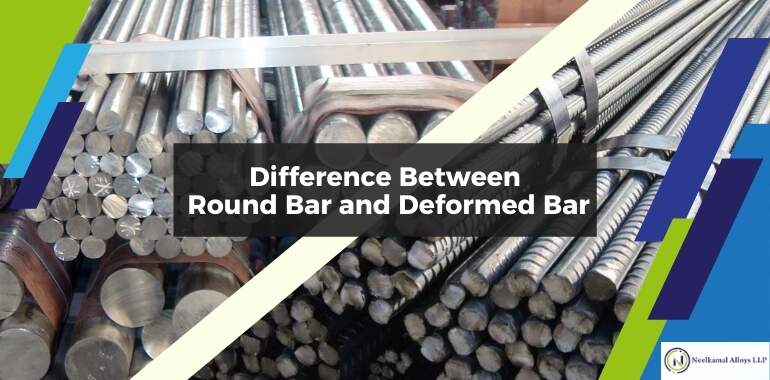
The selection of materials is an essential decision that can spell the difference between success and safety in most projects needing construction and structural engineering. Among them are actually two very debated contenders: Round Bar vs Deformed Bar. Though they may seem similar at first glance, their uses and advantages vary quite noticeably. The blog will highlight the differentiation between Round Bar and Deformed Bar, their uses, and how one can select the correct one for the requirement.
What are Round Bars?
A round bar is a predominantly cylindrical, solid rod which, for its entire length, has a uniform circular cross-section. It is produced from carbon steel, stainless steel, or alloy steel. Due to the numerous ways the product is applied today in construction, manufacturing industry, and the automotive sector it really seems an all-usage material. They are also used in parts of machinery such as shafts, axles, bearings, pins, or bushings.
Characteristics of Round Bars
- Cross-Sectional Design: During the manufacture of round bars, the cross-sectional design is Round and hence develops equal strength in all directions.
- Length Options: These usually come in extra-long lengths to be cut in different sizes for a range of applications.
- Surface Finish: Generally, they have a smooth surface finish, making them less suitable where high friction or bonding is required in their applications.
Common Uses of Round Bars
- Machining Parts: The uniform cross-sectional area and the strength of these steels make them quite serviceable in manufacturing shafts, rods, and pins.
- Use: Used in frameworks and light reinforcement in buildings.
- Automotive Sector: Round bars are used as components in a variety of vehicle parts because of their ductility.
- Miscellaneous Uses: Frequently, it is used in furniture making and often used as a decorative material.
What are Deformed Bars?
Deformed Bars, also referred to as rebar, are made with a surface that is ridged in order to bond well within the concrete when construction is involved. Unlike Round Bars, which are not engineered for construction applications like deformed bars, these materials are designed primarily for constructing buildings, particularly in making reinforced concrete structures.
Characteristics of Deformed Bars
- Surface Design: Ridges, or deforming of discontinuities, on its surface create a mechanical interlocking with the concrete to prevent slippage.
- Higher Tensile Strength: This is so because the deformation of a deformed bar normally offers higher tensile strength than that of a round bar, thus making the former more convenient to use in heavy-load applications.
- Sizes and Grades: Deformed bars, available in different diameters, are classed into several grades depending on the yield strength criteria and the application reasonableness.
Common Applications of Deformed Bars
- Concrete Reinforcement: Primarily used in reinforced concrete structures (like beams, slabs, and columns) to increase their load-bearing capacity.
- High-Rise Buildings: Used in construction projects where improved, enhanced stability and better structural integrity under compression and tension are required.
- Bridges and Dams: Used very frequently in mega-infrastructure due to the strength and reliability these materials derive.
- Road Construction: These are used in pavement and road construction to improve the life span and different performances.
Key Differences Between Round Bar and Deformed Bar
Knowing how these two types of bars differ might make things a little easier on your end. Here are the key differences:
Application Focus
Round Bar: More utility in general machining, manufacturing, and as a decorative metal.
Deformed Bar: Designed specifically for concrete reinforcement, it assures greater bonding strength.
Mechanical Properties
Round Bar: Uniform strength lacks a textured surface to optimize traction or bonding with other materials.
Deformed Bar: It has higher tensile strength and is specially shaped to enhance interlocking in concrete.
Surface Texture
Round Bar: Smooth surface, good for applications where friction is not ideal or is not a concern.
Deformed bar: The ribs or deformations increase the bond with the concrete in a very high manner, raising the performance of the structure dramatically.
Conclusion:
Although Round Bar and Deformed Bar may look alike at first glance, it is their very unique characteristics and uses that separate them in the field of construction and manufacture. When choosing between the two, consider the specific requirements of your project, including load-bearing needs, bonding requirements, and budget constraints.
Whether you go for the versatility of round bars or the structural integrity provided by deformed bars, knowing their differences is crucial in making your project a success. If ever you are in doubt, then seek the advice of a material supplier or a structural engineer; it shall establish clarity in that area specifically set by your needs.
